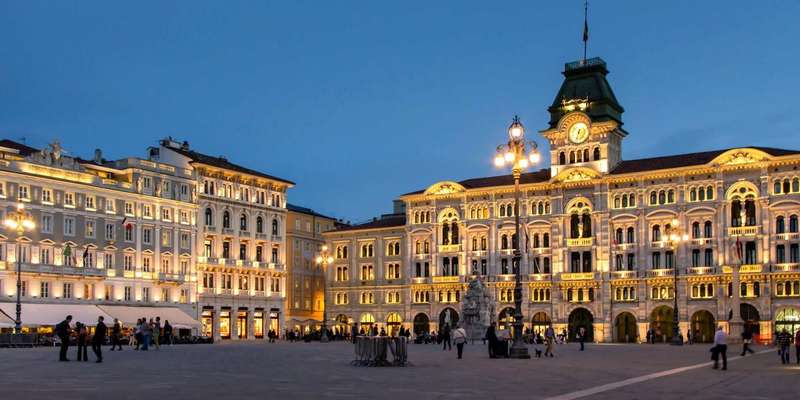- Home
- Useful Tips
- Unique architectural features...
Trieste's Palazzo Gopcevich stands as a stunning example of 19th-century neoclassical architecture, yet many travelers overlook its unique features or struggle to appreciate its historical significance. With over 60% of visitors to Trieste focusing solely on its more famous attractions, this architectural gem often remains unexplored. The challenge lies not just in recognizing the building's exterior beauty, but in understanding the stories behind its intricate designs – from the symbolic statues adorning its facade to the carefully preserved interiors that whisper tales of Trieste's Habsburg-era grandeur. Without proper context, you might miss the subtle Venetian influences in its arches or the meaning behind its mythological reliefs, turning what could be a profound cultural experience into just another photo opportunity.


Decoding the facade – understanding Palazzo Gopcevich's symbolic architecture
The first thing that strikes you about Palazzo Gopcevich is its ornate facade, a masterpiece of symbolic storytelling. Local architects will point out how the building's neoclassical style blends with distinct Venetian elements, particularly in the rounded arches and loggias. The statues crowning the building aren't merely decorative – they represent commerce and navigation, paying homage to Trieste's historic role as a bustling port city. Look closely at the mythological reliefs between windows; these depict scenes from Homer's Odyssey, subtly connecting Trieste's maritime identity with classical antiquity. The rusticated ground floor, a hallmark of Venetian palazzos, contrasts beautifully with the smoother upper levels, creating visual interest while demonstrating the architect's skill in layering textures. Each of these elements combines to tell a story about the building's 1850 construction period, when Trieste was flourishing under Austrian rule yet maintained strong cultural ties to Italy.
Inside the palazzo – where to find hidden artistic treasures
While the exterior impresses, Palazzo Gopcevich's true marvels reveal themselves indoors. The grand staircase immediately captures attention with its perfect proportions and intricate ironwork railings – a signature feature of Triestine architecture. Upstairs, the original salons maintain their lavish parquet floors and stucco ceilings, though many visitors miss the delicate floral motifs hidden in the cornices. The second-floor windows offer an often-overlooked perspective: framed views of Trieste's rooftops and the Adriatic beyond, perfectly composed like living paintings. Currently housing the Teatro Museum, the building's interior layout reflects its original purpose as a prestigious residential palace, with rooms flowing logically from public reception areas to more private quarters. Don't rush past the transitional spaces – the doorways and landings feature exquisite woodwork and hardware that demonstrate 19th-century craftsmanship at its finest.
The perfect time to visit – avoiding crowds and catching golden light
Timing your Palazzo Gopcevich visit transforms the experience. Mornings between 10-11:30 AM offer soft light that accentuates the facade's sculptural details, while weekdays see fewer school groups in the museum. Locals know that late afternoon brings a magical glow to the building's white stone as sunlight reflects off the nearby canal. The palazzo takes on different personalities throughout the year – spring reveals how its architecture complements Trieste's blooming jacaranda trees, while winter months provide unobstructed facade views when deciduous trees are bare. Special evening openings during cultural events allow rare opportunities to see the building illuminated against the night sky. For photographers, positioning yourself across the street near the canal's edge captures the full grandeur of the building's proportions, especially when its windows glow with interior lighting during the blue hour.
Beyond the obvious – local secrets for architecture enthusiasts
Those truly passionate about architecture should seek out Palazzo Gopcevich's less visible marvels. The building's rear courtyard, often missed by visitors, showcases an elegant service staircase with distinctive wrought-iron details. Look upward in the main stairwell to spot the original glass skylight, its delicate framing demonstrating 19th-century engineering ingenuity. Local historians note how the palazzo's floorplan adapts traditional Venetian residential design to Trieste's urban grid – compare it with nearby Palazzo Carciotti to spot subtle differences in proportion. The building's restoration after WWII bombing preserved many original features; trained guides can point out where careful reconstruction blends with authentic elements. For context, visit the Civic Museum's architectural archives to see Gopcevich's original blueprints, which reveal how the design balanced public grandeur with private functionality – a testament to Trieste's golden age of bourgeois architecture.



